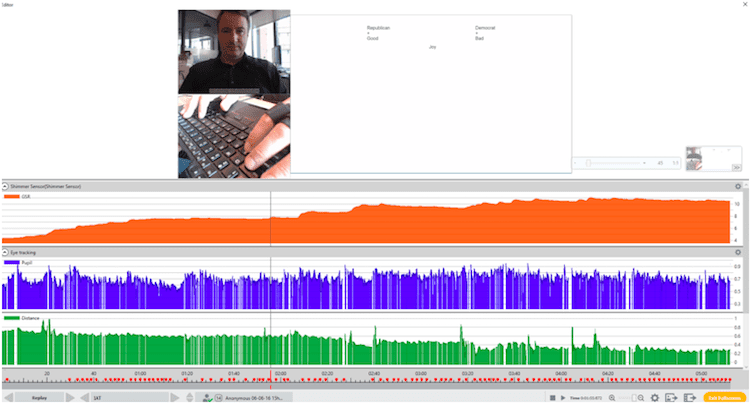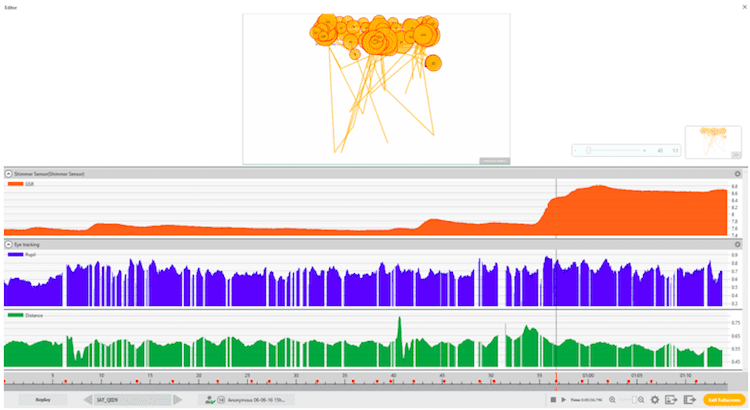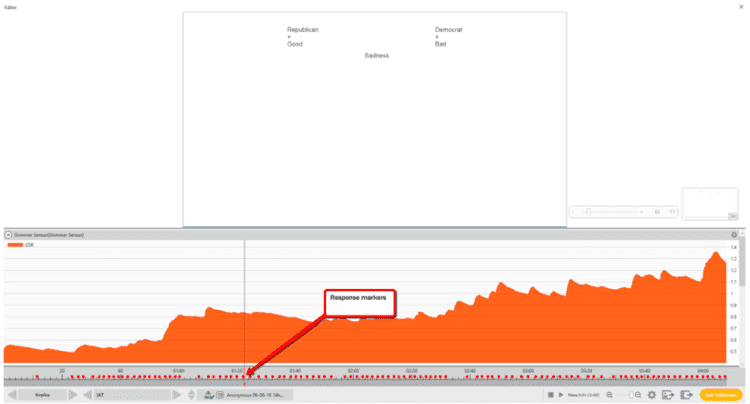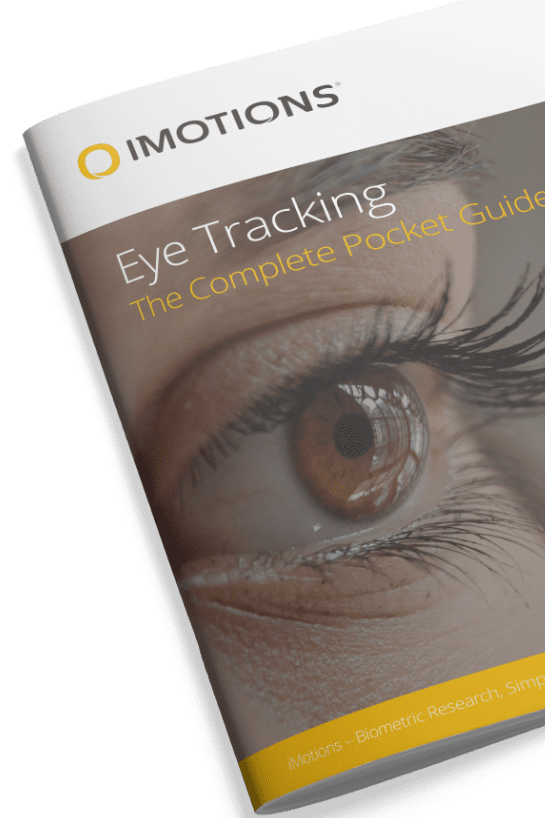Discover how the Implicit Association Test (IAT) uncovers subconscious biases that shape perceptions and decision-making. Learn how this psychological tool is advancing research in marketing, psychology, and diversity studies with biometric integrations.
Table of Contents
The Power of Subconscious Bias: How Hidden Influences Shape Our Perceptions
We all carry subconscious biases shaped by our upbringing and life experiences. These biases influence our perceptions, preferences, and judgments—whether we realize it or not. For instance, we might associate red cars with speed and recklessness or feel a deep admiration for an actor due to a favorite childhood film. These associations are often formed unconsciously and can impact decision-making in ways we don’t fully recognize.
People also tend to present themselves in socially desirable ways, whether intentionally or not. When answering a lifestyle questionnaire about exercise habits, for example, an individual might overestimate their physical activity. Since these biases often operate beneath our awareness, it can be difficult to identify them in ourselves and others.
Beyond individual preferences, implicit biases also extend to societal perceptions of different groups of people. Understanding these biases is crucial for research, policymaking, and social equity. But how can we accurately measure something that exists primarily in the subconscious? One widely recognized tool is the Implicit Association Test (IAT).
What is the Implicit Association Test (IAT)?
The Implicit Association Test (IAT) is a psychological tool designed to measure implicit attitudes—automatic, subconscious associations that influence our perceptions and behavior. These attitudes stem from various cognitive processes, including memory, perception, and social conditioning. Even when we consciously reject stereotypes or biases, these implicit associations may still be present in our subconscious.

Developed in 1998, the IAT evaluates the strength of associations between concepts (such as “light” and “dark”) and attributes (such as “good” or “bad”). Participants are asked to quickly categorize words or images, relying on instinctive responses rather than deliberate thought.
The underlying principle is that the faster an individual pairs two related concepts, the stronger their subconscious association between them. The IAT has been widely used in psychological research and public discourse, offering a unique lens into implicit bias.
So how can IAT be utilized in human behavior research and how can it work for you?
How does Implicit Association work
In its simplest form, the IAT presents participants with two concepts and an attribute, requiring them to categorize these elements as quickly as possible. For example, a participant may need to associate the words “young” and “old” with the attribute “foolish.” If an individual pairs certain concepts more quickly than others, this suggests a stronger implicit association.

Because responses in the IAT are made rapidly and privately, this method may reveal biases that people are unwilling or unable to express in traditional surveys. This makes the IAT particularly valuable for research in areas affected by social desirability bias—where individuals modify their responses to appear more socially acceptable. The test has been applied in various fields, including diversity and inclusion research, marketing, and behavioral science.
Read about the different types of bias here. You can try various types of IAT developed by Harvard University.
What is the advantage of IAT?
Let’s take a look at an example:
Traditional survey methods, such as anonymous questionnaires or face-to-face interviews, can be influenced by conscious bias, lack of self-awareness, or the desire to provide socially acceptable answers. Even well-designed surveys may not fully capture deep-seated attitudes. The IAT helps overcome these limitations by bypassing direct questioning and instead measuring instinctive reactions.
For example, in consumer research, the IAT can be used to gauge subconscious attitudes toward brands, products, or marketing campaigns. A person may consciously report a preference for a particular brand but demonstrate a stronger implicit association with a competitor, revealing deeper, unspoken consumer preferences.
Taking IAT to the next level
Modern research has taken the IAT a step further by integrating biometric data collection. iMotions, in collaboration with Qualtrics, offers an advanced version of the IAT with features such as stimulus randomization and detailed response analysis. These enhancements allow researchers to gather deeper insights into reaction times and accuracy.
Moreover, new methodologies incorporate additional biometric measures such as eye tracking, electroencephalography (EEG), and electrodermal activity (EDA/GSR). These tools help researchers analyze unconscious reactions in even greater detail. For instance:
- Facial expression analysis can track emotional responses during an IAT session.
- EEG can monitor brain activity to detect unconscious biases in real time.
- Galvanic skin response (GSR) and electromyography (EMG) can measure physiological arousal and stress levels, indicating how strongly a participant reacts to different stimuli.
Some studies have even explored using motion detection software to measure head movements—such as nodding or shaking—as alternative responses in IAT assessments. These innovations open new possibilities for understanding human behavior with unprecedented precision.


When it comes to completing the task, iMotions IAT provides subjects with clear instructions on how to complete each block. This is important for a task that requires rounds of rapid responses.
Check out the image below for a sample of our instructional display:

In terms of the format the tasks take, the IAT typically consists of five blocks in which subjects have to categorize a word or image which appears in the middle of the screen using a designated button.
In iMotions, each screen is captured as its own still image “scene,” which is useful for creating aggregated heat maps.


Further, markers are automatically pulled into the system to note when subjects pressed a key, and which key they pressed:

Note that there are a number of variations of this task, varying across categories such as race, weight, sexuality, gender, and even socioeconomic status. Within iMotions, you can simply change the variation by changing the text and/or images presented in the Qualtrics design.
Conducting Remote IAT Studies
With the rise of remote research capabilities, the IAT can now be conducted online, reaching participants worldwide. Platforms like iMotions enable remote data collection, allowing researchers to capture facial expression analysis and other biometric data alongside the IAT. This flexibility enhances the accessibility and scalability of implicit bias research.
Conclusion
The Implicit Association Test remains a valuable tool for uncovering hidden biases and understanding subconscious attitudes. As technology evolves, integrating biometric and neurophysiological measures will further enhance the accuracy and applicability of IAT research. Whether in psychology, marketing, law enforcement, or corporate training, the IAT provides unique insights into the implicit forces shaping human behavior.
To learn more about the Implicit Association Test and its applications, explore resources from Harvard University or dive into the latest research on implicit bias measurement.
Implicit bias shapes our interactions, decisions, and societal structures. By leveraging tools like the IAT, we can better understand and address these hidden influences, fostering greater awareness and inclusivity in our personal and professional lives.
Let’s talk!
Schedule a free demo or get a quote to discover how our software and hardware solutions can support your research.
Eye Tracking
The Complete Pocket Guide
- 32 pages of comprehensive eye tracking material
- Valuable eye tracking research insights (with examples)
- Learn how to take your research to the next level












